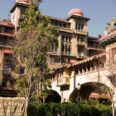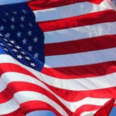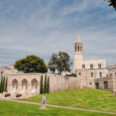
Pasadena Unified students joined thousands across Los Angeles County to witness the April 8, 2024 solar eclipse. [Pasadena Unified photo]
Thousands of Southland residents wearing protective eye-wear or utilizing other safety gadgets stared skyward Monday to view a partial solar eclipse, although Southern California was far from the “path of totality” that saw the sun completely blocked out in some other parts of the country.
The eclipse began in the late morning and continued through early afternoon. Hundreds gathered at Caltech, the Huntington Library, and other local venues to watch the spectacle.
PUSD students joined millions of people across the country as they safely observed a solar eclipse. CIS Academy hosted a viewing party at the Wilson campus where students from Willard Elementary, Willard Children’s Center, and Pasadena Adult Living Skills (PALS) used eclipse glasses, used Galileoscopes built by the Pasadena High School Astronomy Club, and learned about our solar systems from local astronomers.
The total eclipse, where the moon fully blocks the light of the sun for several minutes, made landfall Monday morning along Mexico’s Pacific coast and crossed into Texas and 14 other U.S. states, before exiting over Canada. Elsewhere in North America, including Los Angeles, there was only a partial eclipse.
In areas of total eclipse, the moon shrouded the sun for up to 4 minutes, 28 seconds. The celestial event attracted millions of people to cities and towns in its path.
Griffith Observatory hosted a live online broadcast from Belton, Texas, from 10 a.m. to 1 p.m. Monday to provide people with a glimpse of the eclipse’s totality.
In Los Angeles, the height of the partial eclipse occurred around 11:15 a.m., with the moon covering 57% of the sun’s diameter and 49% of the sun’s area, according to observatory officials.
Eclipse observers were cautioned well in advance about the danger of staring directly at the sun to see the eclipse. For Monday’s eclipse and all future eclipses, health officials offered a series of tips:
- Do not look directly at the sun;
- Do not use sunglasses, binoculars, or telescopes;
- Always supervise children using solar viewers;
- Use a pinhole viewer to view the eclipse indirectly without looking at the sun; and
- Wear eclipse glasses, or solar viewers, with certified solar filters and ensure lenses are in good condition.
The next partial eclipse visible in the Los Angeles area will be on Jan. 14, 2029. The U.S. won’t see another total eclipse until 2044.














 21 comments
21 comments


